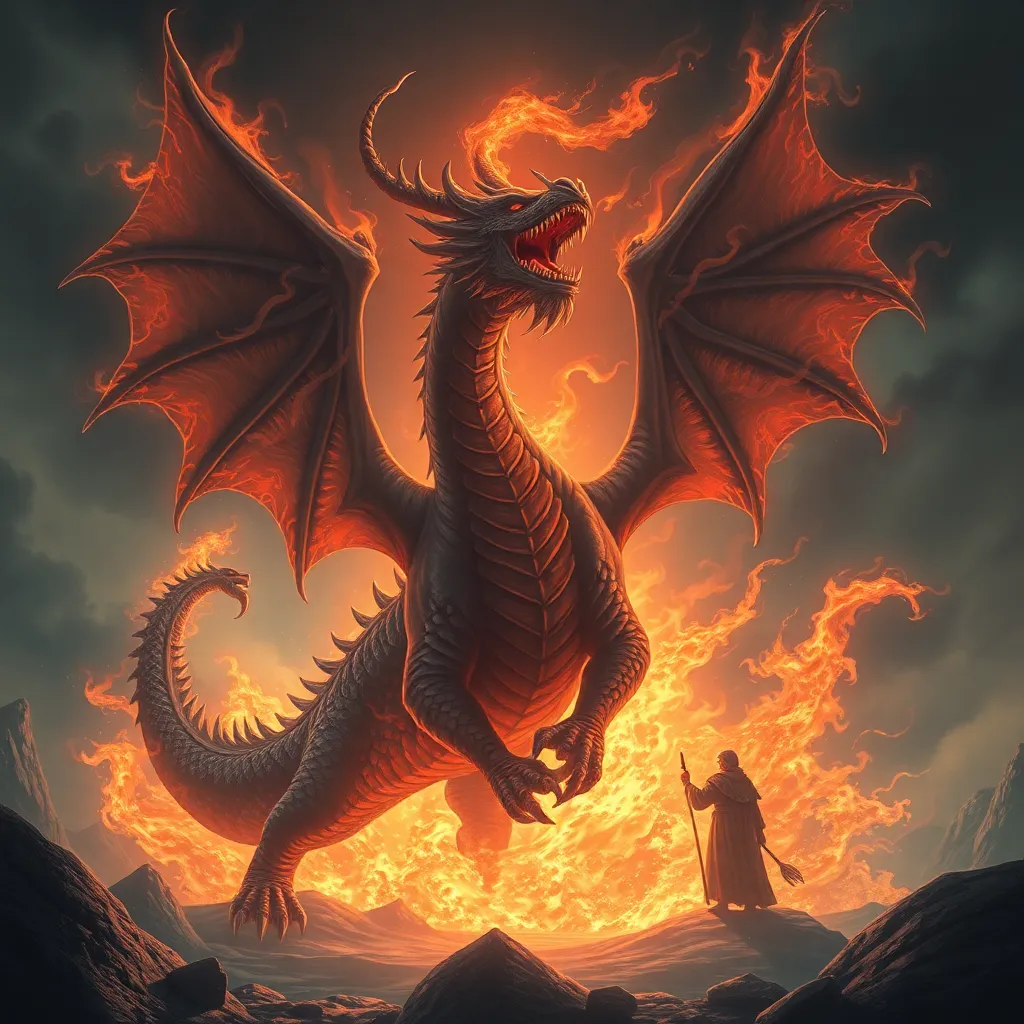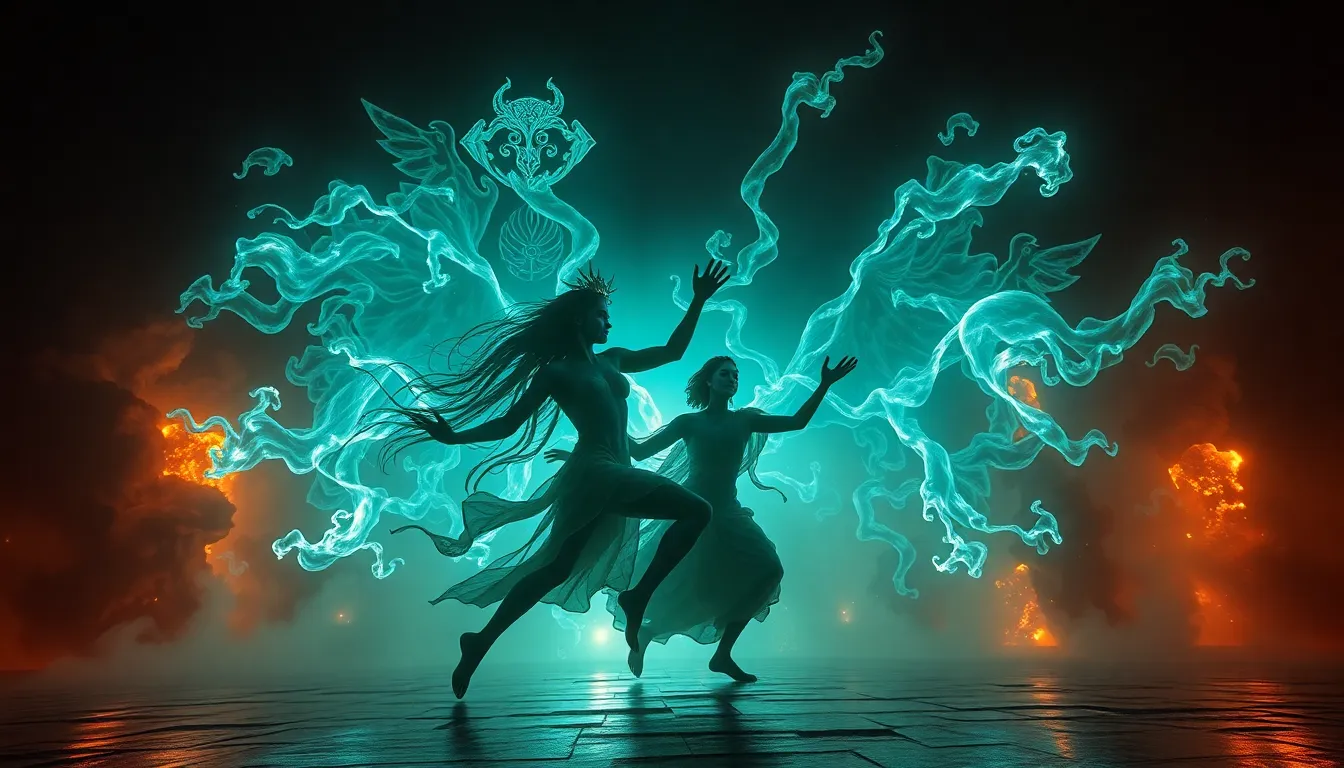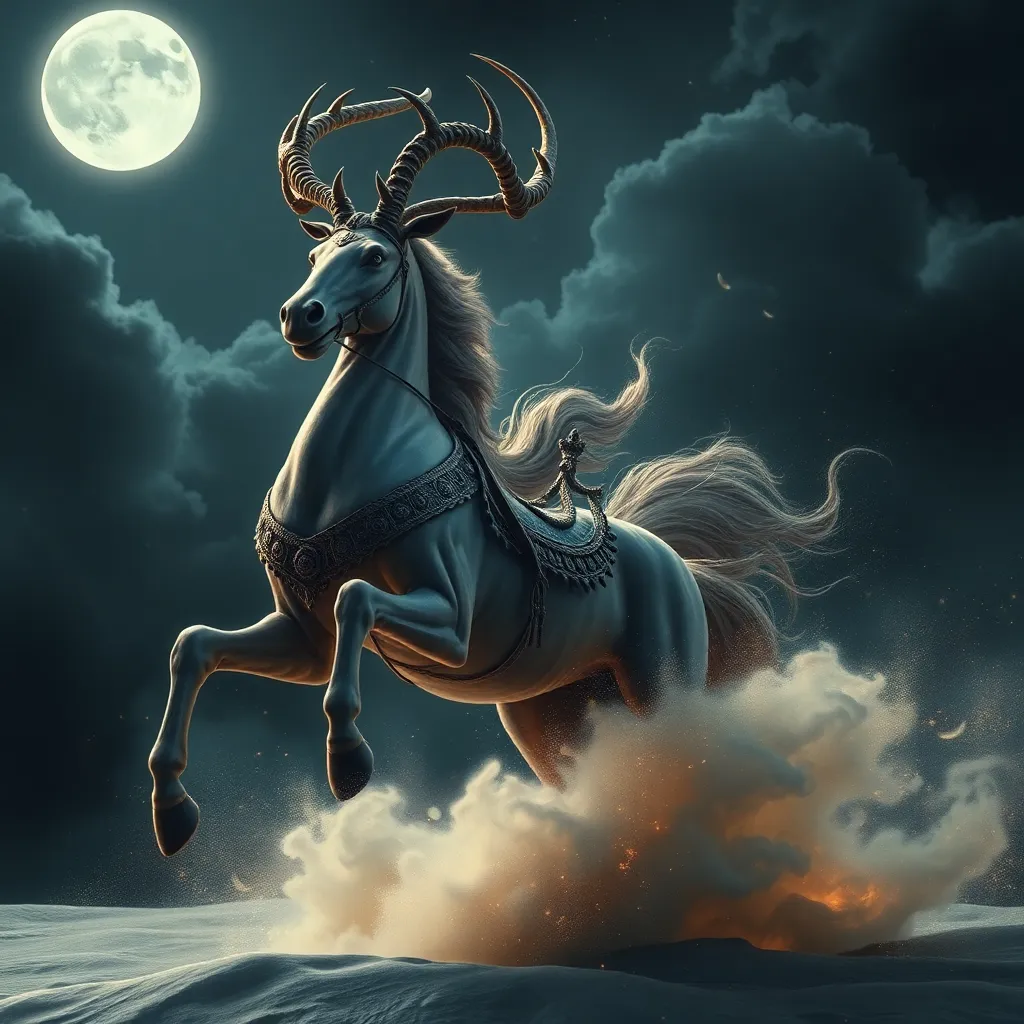Fafnir and the Divine: The Dragon’s Role in Norse Religion
I. Introduction
In the rich tapestry of Norse mythology, few figures stand out as prominently as Fafnir, the dragon. Fafnir’s story is not just one of a fearsome creature but is deeply intertwined with themes of greed, transformation, and heroism. Dragons, in general, hold a significant place within Norse religion, embodying both the chaos of the natural world and the moral lessons that accompany them. This article delves into Fafnir’s origin, symbolism, and his pivotal role within the context of Norse cosmology and hero myths, exploring the intricate relationships between dragons, power, and morality.
II. The Mythological Origin of Fafnir
The tale of Fafnir begins with his origin as a dwarf, part of the legendary lineage of the Nibelungs. Initially, Fafnir and his brother Regin were tasked with guarding their father’s treasure, the cursed Rhinegold. However, the allure of the gold led Fafnir to betray his family, ultimately resulting in his transformation into a dragon. This metamorphosis serves as a metaphor for how greed can corrupt and alter one’s very being.
The curse of the Rhinegold, which brings death and misfortune to those who possess it, highlights the implications of wealth in Norse mythology. It serves as a narrative device that warns of the destructive power of greed. Fafnir’s story is intricately linked to the Volsunga Saga, where his transformation and subsequent death at the hands of the hero Sigurd are central to the plot, showcasing the tragic consequences of avarice.
III. Symbolism of Dragons in Norse Mythology
Dragons in Norse mythology are multifaceted symbols, representing both chaos and destruction as well as guardianship. They often serve as obstacles that heroes must confront, embodying the chaos that heroes strive to overcome. The duality of dragons can be seen in various myths where they protect great treasures, yet also bring about ruin through their greed and violence.
- Guardians of Treasures: Dragons like Fafnir are often depicted as protectors of vast riches, symbolizing the allure of wealth.
- Adversaries of Heroes: They serve as formidable foes that challenge the strength and bravery of heroes.
Fafnir, in particular, epitomizes the consequences of greed. His insatiable desire for wealth transforms him into a monstrous dragon, illustrating the moral that unchecked greed can lead to one’s downfall.
IV. Fafnir’s Role in the Hero’s Journey
In Norse tales, dragons like Fafnir represent significant challenges for heroes. Sigurd’s quest to slay Fafnir is not merely an act of bravery; it is a pivotal moment in his journey that tests his character and resolve. The themes of bravery and fate are intertwined in this narrative, as Sigurd must confront not only the dragon but also the destiny that awaits him.
The dragon-slaying motif is a recurring theme in hero myths across cultures, symbolizing the triumph of good over evil and the overcoming of personal fears. Fafnir’s defeat by Sigurd serves as a rite of passage for the hero, marking his transition from youth to maturity and his acceptance of the responsibilities that come with heroism.
V. Fafnir and the Themes of Power and Corruption
The story of Fafnir is a cautionary tale about the corrupting influence of wealth and greed. His transformation into a dragon is a direct consequence of his desire for power and material possessions. In Norse culture, Fafnir serves as a warning against the dangers of letting greed dictate one’s actions and the inevitable consequences that follow.
The themes of power, fear, and divine retribution are prevalent throughout Fafnir’s narrative. The dragon embodies the fearsome consequences of greed, not only for himself but also for those around him. The moral implications of his story resonate with the idea that power gained through immoral means leads to destruction and chaos.
VI. Fafnir in the Context of Norse Cosmology
In the grand scheme of Norse cosmology, dragons like Fafnir occupy a unique and significant space. They are often associated with the Nine Worlds, acting as intermediaries between the realms of gods and men. Fafnir’s connection to the World Serpent, Jörmungandr, further emphasizes the intertwining of dragon mythology with the larger cosmic narrative.
During Ragnarök, the prophesied end of the world, Fafnir’s role becomes even more pronounced. Dragons are depicted as harbingers of doom, aligning with the chaos that accompanies the destruction of the world. Their presence in these apocalyptic tales serves to highlight the destructive potential of greed and the importance of moral integrity.
VII. Contemporary Interpretations of Fafnir
Fafnir’s legacy continues to thrive in modern literature and media, where dragons are frequently portrayed as complex characters embodying both good and evil. Contemporary adaptations often draw on Fafnir’s story to explore themes of greed, power, and redemption.
- Modern Literature: Fafnir appears in various novels and adaptations, often reimagined to explore contemporary issues of morality.
- Popular Culture: Films, video games, and television series frequently incorporate dragon motifs, reflecting society’s ongoing fascination with these mythical creatures.
The relevance of Fafnir’s story in today’s discussions about greed and morality speaks to the timeless nature of these themes. As society grapples with issues of wealth disparity and ethical conduct, the lessons from Fafnir’s tale resonate with modern audiences.
VIII. Conclusion
In summary, Fafnir’s significance in Norse religion and mythology is profound and multifaceted. As a dragon, he embodies the themes of greed, power, and the consequences of moral failings. The lasting impact of dragons in cultural narratives extends beyond the myths themselves, influencing contemporary discussions about morality and human behavior.
Ultimately, Fafnir’s story serves as a reminder of the delicate balance between ambition and ethical conduct, illustrating the interplay between myth and morality that continues to shape our understanding of the divine and the human condition.




